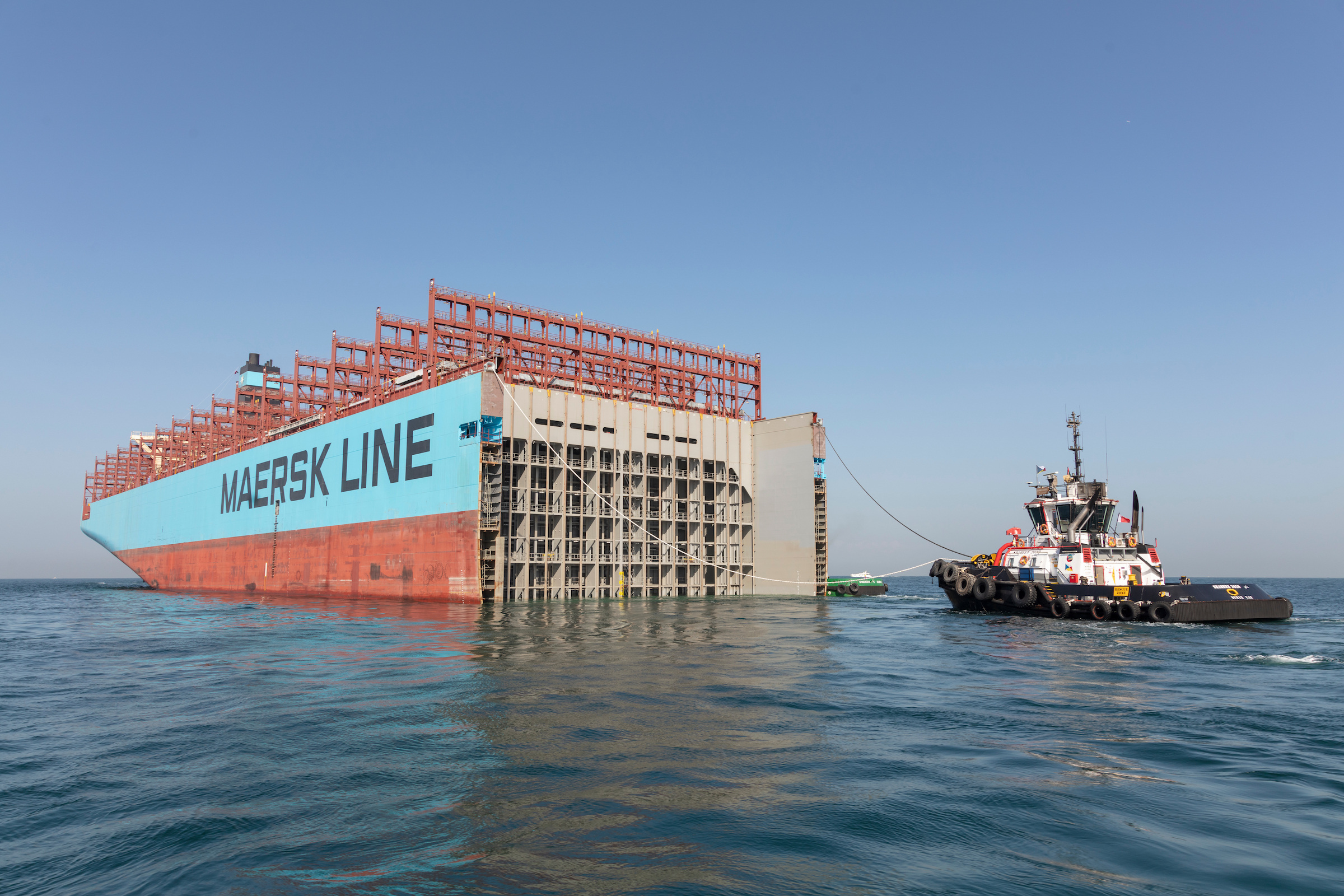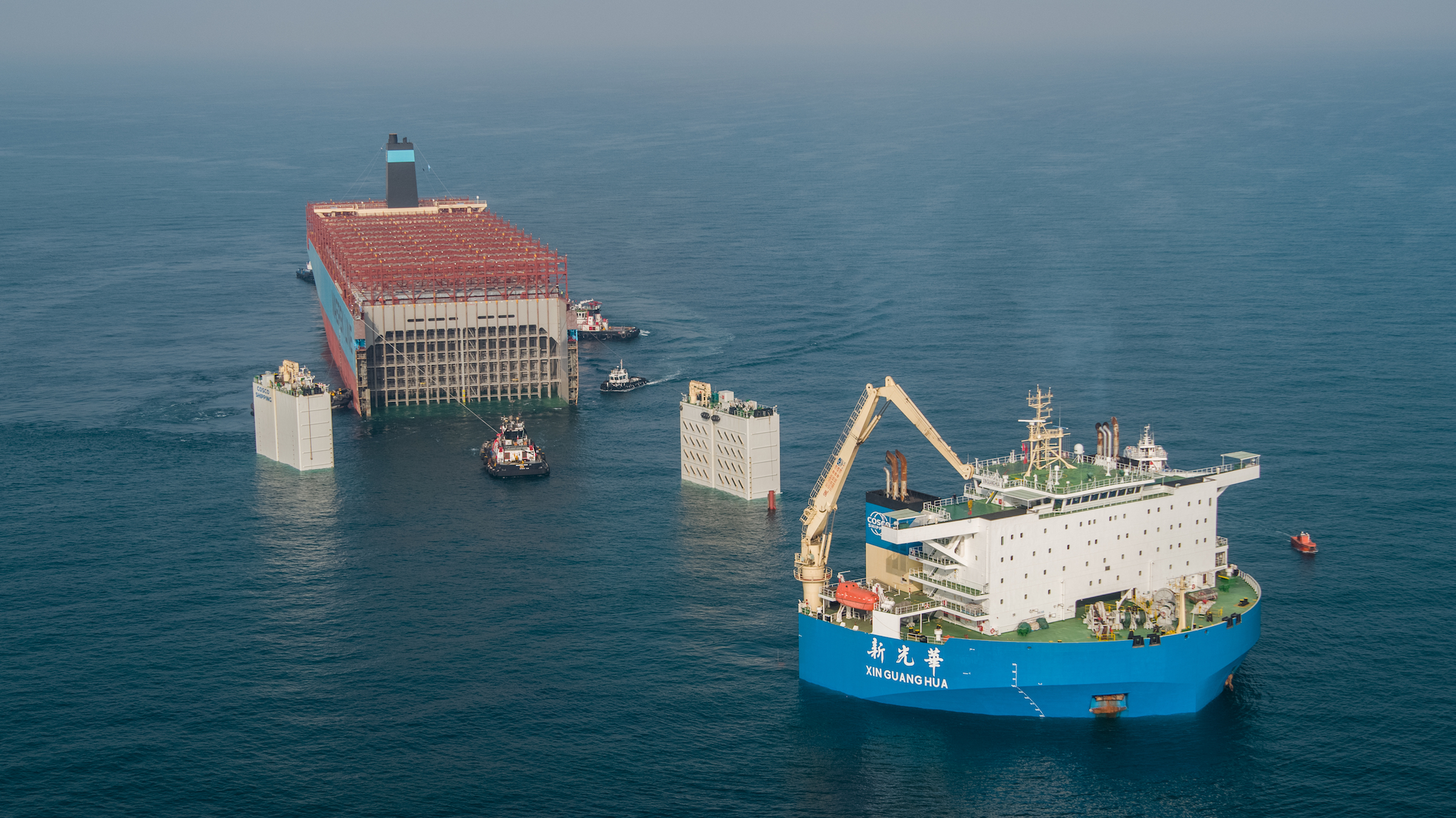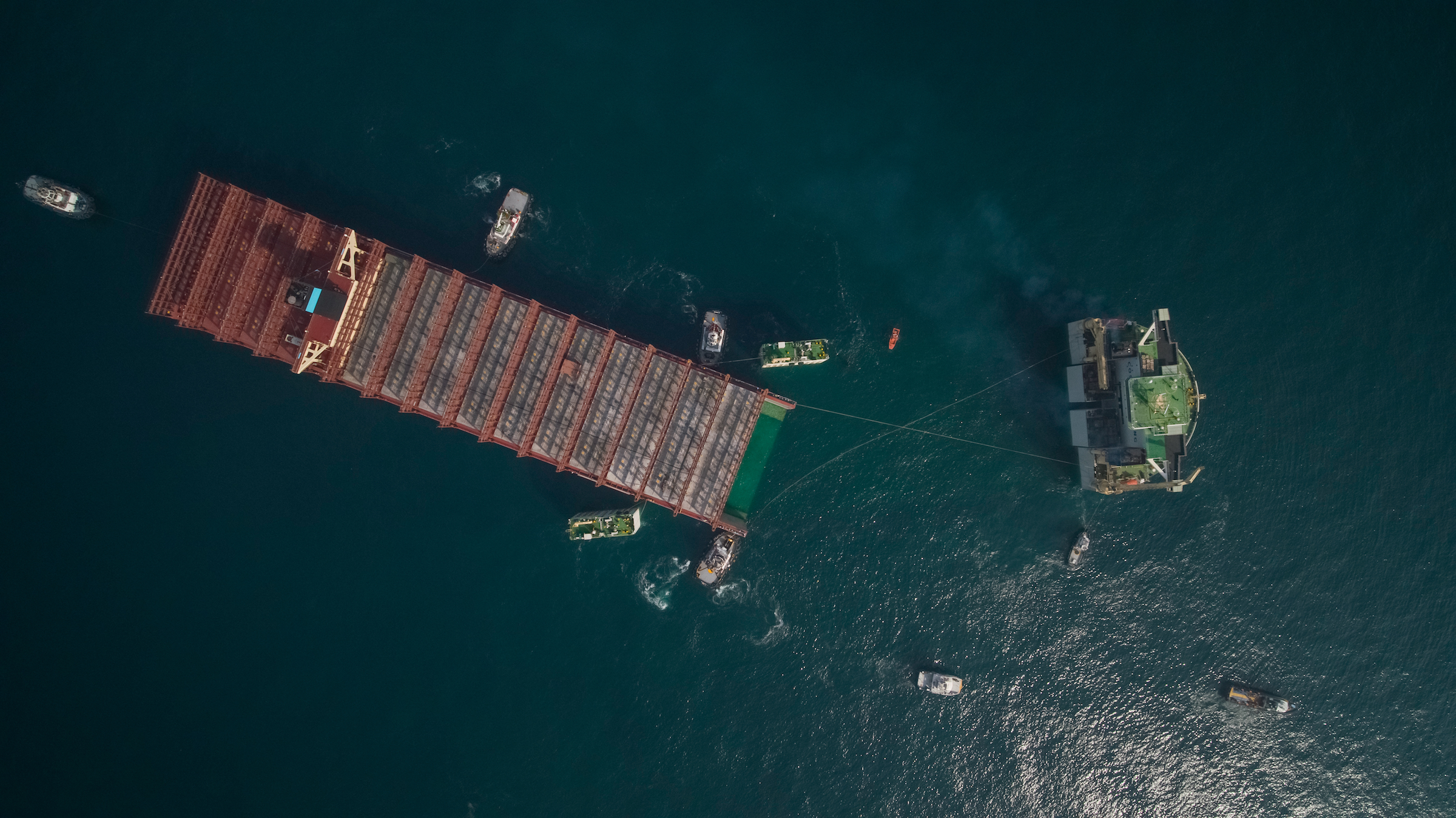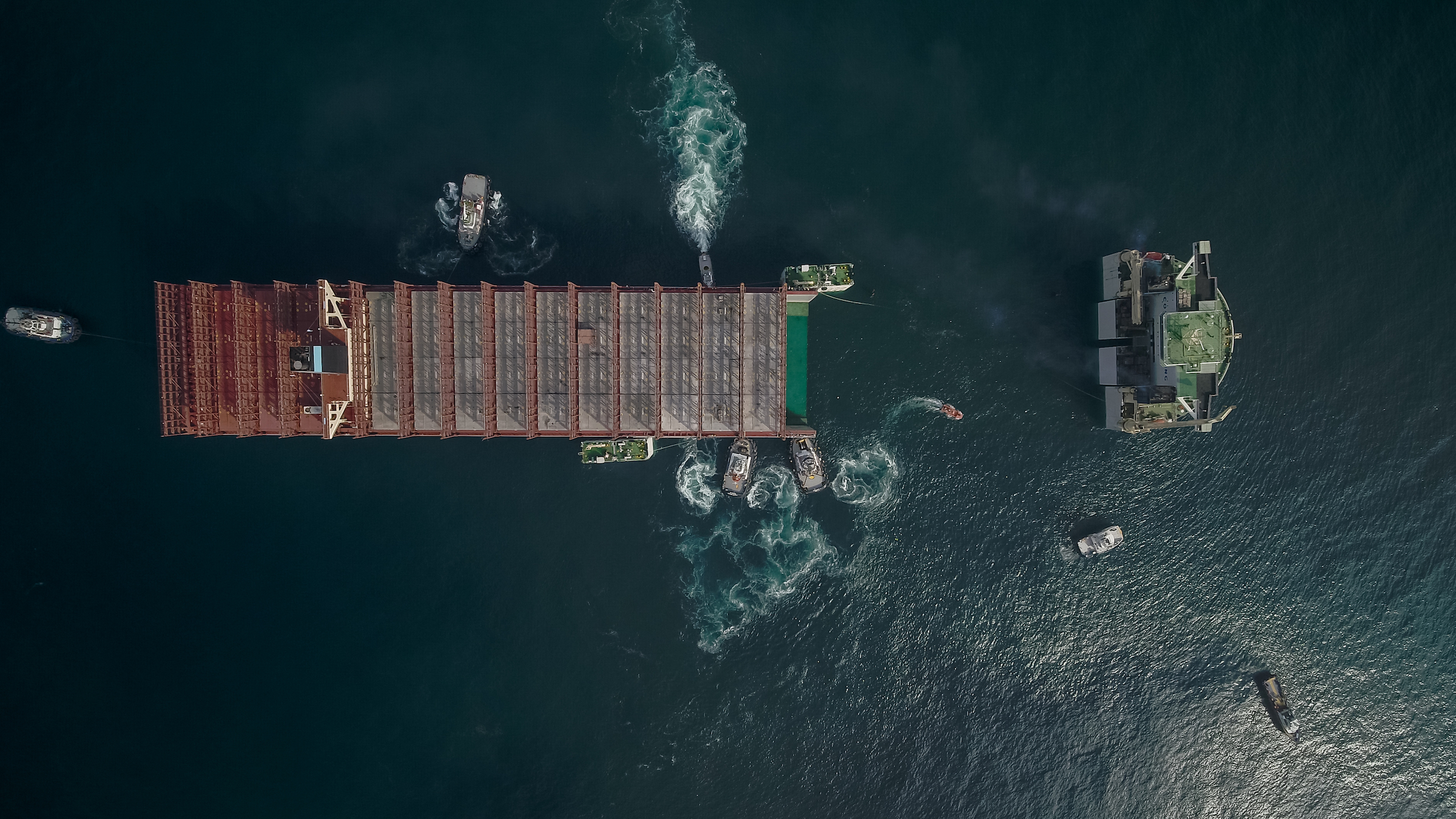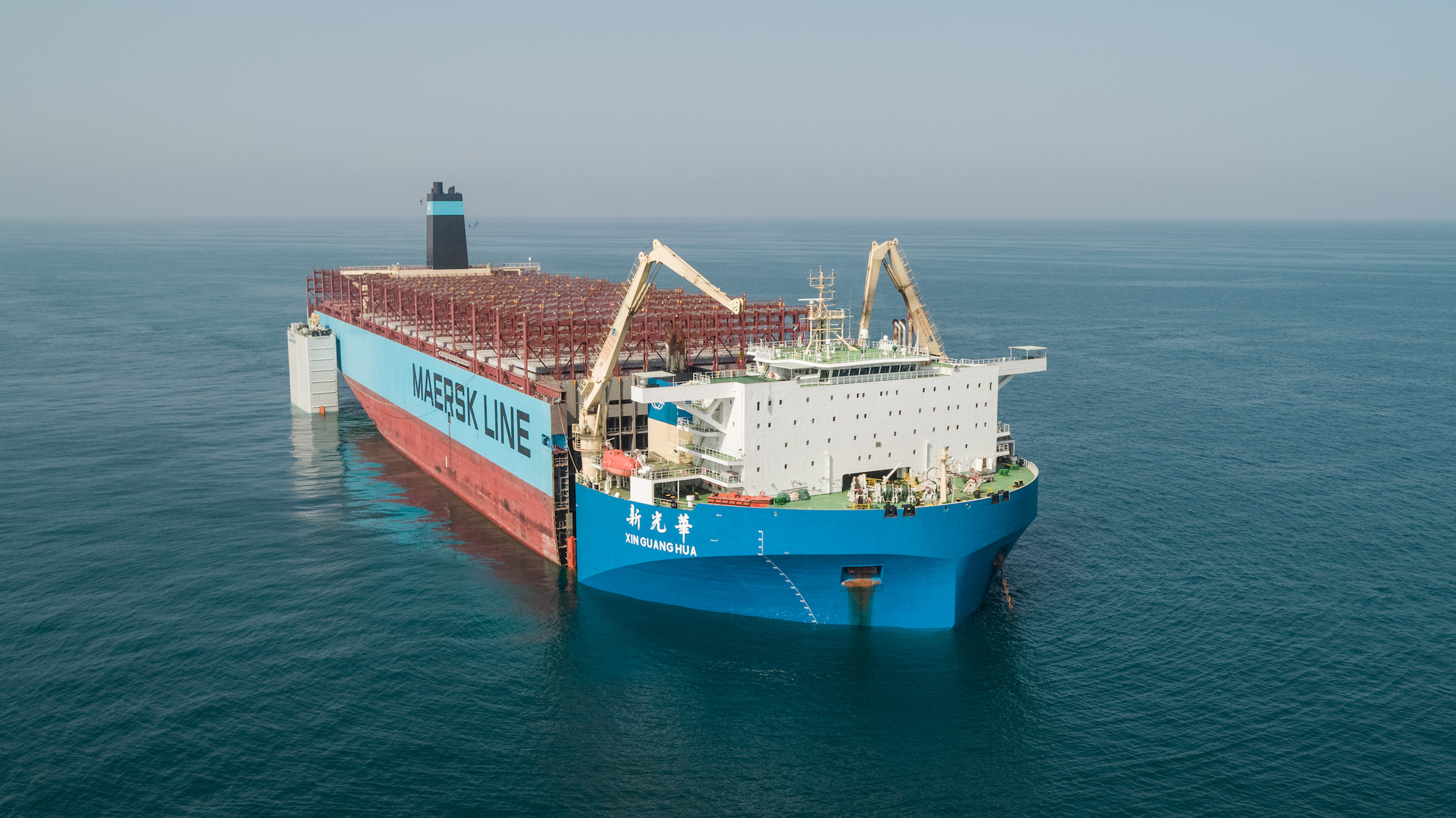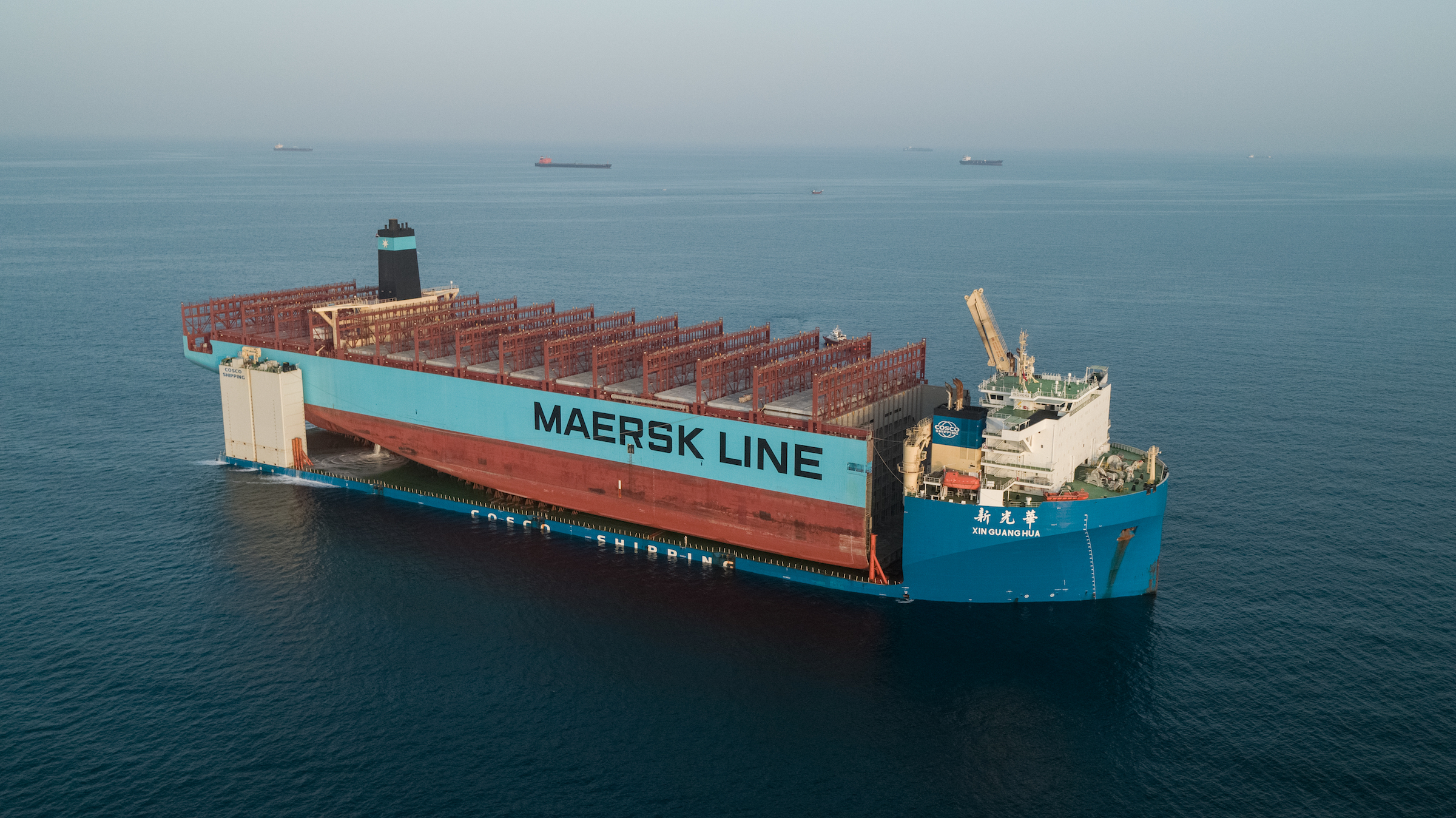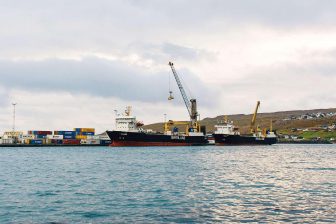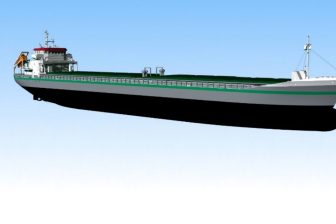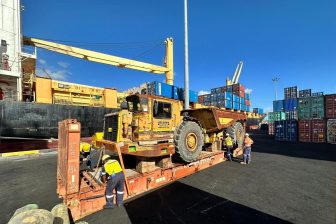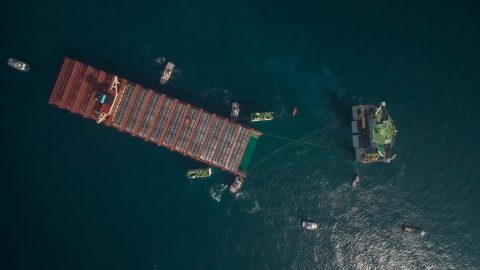
Cosco Shipping transports part of fire-stricken Maersk Honam
The sound part of the vessel Maersk Honam, which was hit by a serious fire last year, is now being transported to Hyundai Heavy Industries Shipyard in South Korea, where it will be rebuilt.
The section was successfully loaded aboard Cosco Shipping’s heavy lift vessel Xin Guan Hua on open waters outside Dubai (UAE) on Saturday, 2 February. Currently in transit, it is expected to pass Singapore Strait today (18 February 2019).
The heavy-lift vessel will deliver the 228.5-metres-long section from midship to stern at Hyundai Heavy Industries Shipyard in South Korea in March, the same yard the vessel was built in 2017.
At the Hyundai Heavy Industries Shipyard, the sound section of Maersk Honam will be joined with a new build forward section. The former forward section is safely moored at Drydock World Dubai for continued removal of damaged containers and debris. The rebuilt vessel is expected to resume service again in the second half of 2019.
SEE PHOTO’S OF THE TRANSPORT BELOW.
Fire
The Maersk Honam caught fire on March 6 last year while sailing in the Arabian Sea. Five of the 27 crew members were killed in the accident.
Although an official investigation into the cause of the fire is still open, Maersk has already changed its policies regarding the stowage of containers with dangerous goods. Containers holding dangerous goods are often the cause for serious fires aboard containerships and have led to a series of severe fires during the last few years.
‘All cargo aboard Maersk Honam was accepted as per the requirements of the International Maritime Dangerous Goods Code and stowed onboard the vessel accordingly. Despite this, as the fire originated in a cargo hold in front of the accommodation which held several containers with dangerous goods, it had an unbearably tragic outcome,” says Ole Graa Jakobsen, Head of Fleet Technology at Maersk.
‘This clearly showed us that the international regulations and practices with regards to dangerous goods stowage needs to be reviewed in order to optimally protect crew, cargo, environment and vessels.’
Risk zones
To prevent container fires from having such desastreus consequences again, the Danish shipping company together with classification bureau ABS reviewed their ship designs and identified six different risk zones.
Containers holding dangerous goods will no longer be stowed next to accommodation and main propulsion plant, which is defined as the zone with the lowest risk tolerance. Similarly, risk tolerance will be low below deck and in the middle of the vessel, whereas the risk tolerance will be higher on deck fore and aft.
‘Container ship fires are a problem for our entire industry and we intend to share and discuss our learnings from this thorough review within relevant industry forums. We very much believe that discussions, views and insights among container carriers can further improve fire safety in our industry’, says Ole Graa Jakobsen.
